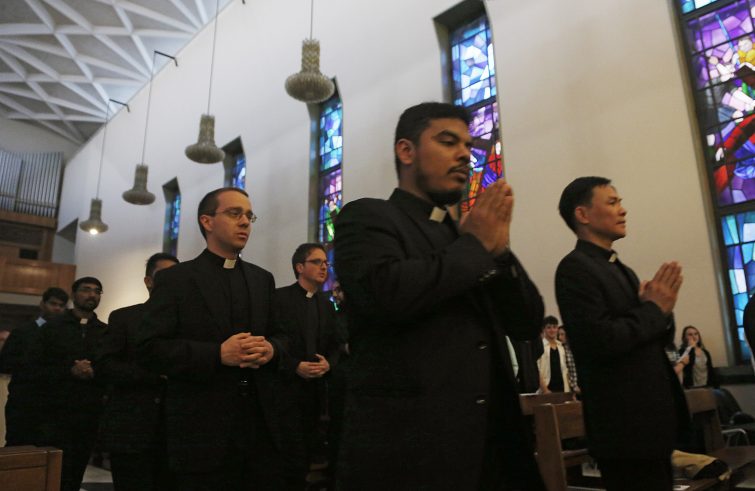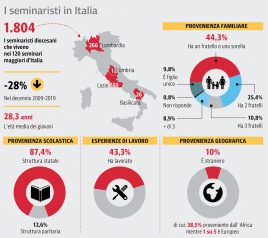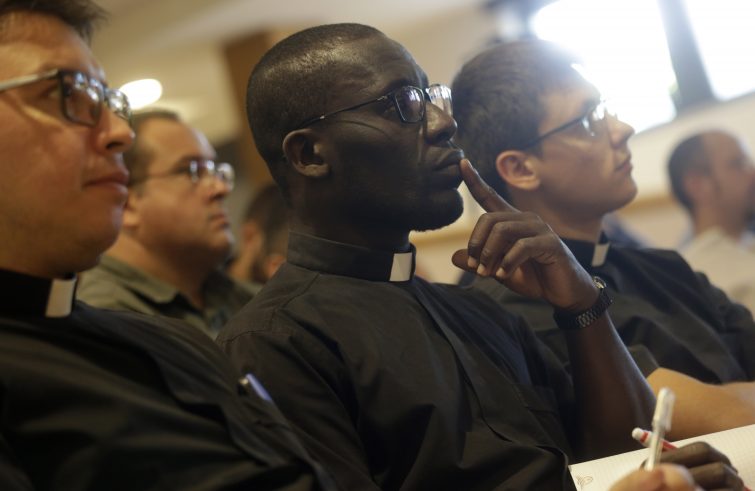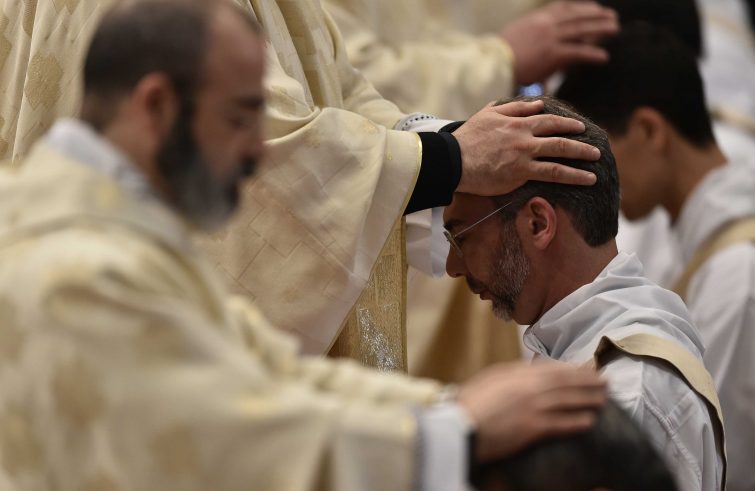
A total of 120 Major seminaries in Italy are home to 1,804 diocesan seminarians. Most of them, 266 (15% of the total) are based in Lombardy and 230 (13%) in Latium, while Basilicata and Umbria are the regions with the lowest overall number of seminarians – 26 (1.4%) and 12 (0.7%) respectively. However, this pattern changes when the seminarians-per-inhabitants ratio is applied. In fact, in this ranking two southern regions register the highest numbers: Calabria with 29 seminarians and Basilicata with 23 seminarians per 500,000 inhabitants. Umbria ranks last with 7 diocesan seminarians. The data, collected by the National Office for the Pastoral Care of Vocations of the Italian Bishops’ Conference following a comprehensive survey of all Italian seminaries, is in line with the declining trend of the past fifty years. In fact, the statistics of the Pontifical Yearbook show that new Catholic vocations have dropped by over 60% in half a century, from 6,337 in 1970 to 2,103 in 2019. In the ten year period 2009-2019 alone, there was a 28% drop in the number of diocesan seminarians in Italy.
This decrease cannot simply be explained in terms of the demographic winter, since the decline in the 18-40 year-old male population over the same period was of 18%.

“The lack of ‘vocations’ is not a sociological problem. Or rather, not only. It appears to be the symptom of a disease that needs to be cured. Self-closure, self-protection, avoiding all challenges, immunising oneself against life, are surely not prospects where life – and vocation – that requires openness, connection, challenges and a willingness to take risks, can thrive. Italy deserves to be evangelised, just like each person’s heart, always”, said Fr Michele Gianola, under-secretary of the Italian Bishops’ Conference and director of the Office.
On average, the young men attending Major seminaries are 28.3 years old.
The greatest proportion of seminarians (43.3%) range from 26 to 35 years of age with marked territorial differences: 50% of seminarians in northeastern Italy fall into this age bracket, but the number declines in central Italy (43.5%) and the south (39.2%). The younger generation – 19-25 year-olds – accounts for 4 out of 10 seminarians (42.2% of the total) and, once again, there are significant differences at national level: 47.3% in southern Italy are younger than 25, 35.5% in central Italy and 37.7% in northeastern regions. One in ten seminarians (13.6%) is over 36. The majority of seminarians come from large families: only one seminarian in ten is an only child, 44.3% have a brother or sister, 25.4% have two siblings and one in ten three siblings (10.8%).
- (Foto Siciliani-Gennari/SIR)
- (Foto Siciliani-Gennari/SIR)
The vast majority of seminarians graduated from a state-run secondary school (87.4%) and one in ten (12.6%) from an officially recognised institution. In terms of courses offered, 28.1% attended humanistic-classical high schools, 26.9% scientific high schools and 23.2% graduated from technical secondary schools. Only one in ten (10.8%) attended vocational schools.
The landscape has changed considerably compared to a few decades ago, when almost all candidates for the priesthood completed a secondary school diploma in classical studies. Moreover, almost half of all seminarians (45.9%) attended varied university courses and slightly fewer (43.3%) were employed. “Vocation is a craft that needs the contribution of many to blossom. It’s not only a matter of time devoted to discernment such as the seminary – it involves manifold contributions. In fact, more or less consciously, all forms of care, all educational efforts, all steps taken together for personal growth and development contribute to the formation of the human person. Thus all domains can become spheres for the care of vocations, for mutual care, for the care of the human person, for creating a dialogue based on appreciation and listening, which is a fruitful soil for sowing the seeds of the Gospel.”
In terms of nationality, 10% of seminarians are foreigners and half of them attend a seminary in Central Italy. Africa is the continent with the highest numbers. In fact over a third of non-Italian seminarians (38.5%) are from Africa, notably Madagascar, Nigeria, Cameroon and Ivory Coast. Approximately one in five foreign seminarians is European, mostly from Poland, Albania, Romania and Croatia.
“The increasingly variegated composition of our seminaries and prospective priests requires us to re-think our educational proposal in terms of discerning and enhancing the richness of the numerous paths involved in the choice of vocation. Those who enter the seminary”, concludes Fr Gianola, “bring with them their individual background, comprising both strengths and limitations, fruitfulness and wounds. The whole of this, which is life, cannot be ignored because it is there that – through appropriate discernment – the priestly vocation can be found, the “fabric” that the Church calls to discern throughout the formation process. Adopting a vision of vocations does not mean seeing ‘priests and nuns’ everywhere but rather being able to perceive the calling that the Holy Spirit has instilled into the hearts of adolescents and young people in all contexts, accompanying them in their journey so that they too may acknowledge them by listening to the Word.












